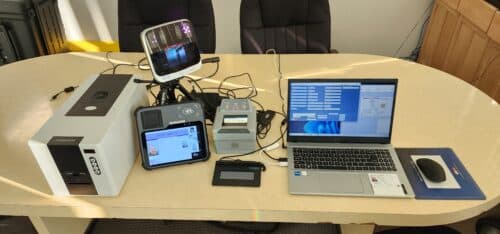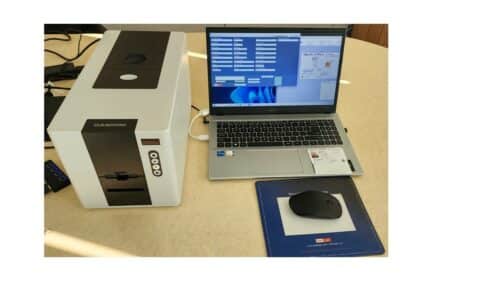A ID card printer is an electronic desktop printer with single or dual card feeders which print and personalize plastic cards. In this respect they differ from, for example, label printers which have a continuous supply feed. Card dimensions are usually 85.60 × 53.98 mm, standardized under ISO/IEC 7810 as ID-1. This format is also used in smart cards, telephone cards, credit cards, driver’s licenses and healthcare or health insurance cards. This is commonly known as the bank card format (CR80). Card printers are controlled by corresponding printer drivers or by means of a specific programming language. Generally card printers are designed with laminating, striping, and punching functions, and use desktop or web-based software. The hardware features of a card printer differentiate a card printer from the more traditional printers, as ID cards are usually made of PVC plastic and require laminating and punching. Different card printers can accept different card thickness and dimensions.
The most common types of card printers are dye-sublimation, which are typically refered to as direct-to-card (DTC) or retransfer printers which use a reverse image technology. Card printers typically print in a 300 dpi resolution, but some newer retransfer printers can print in 600 dpi. The most common brands of card printers are Matica, Evolis, Dascom, Pointman, Zebra, Magicard, MBS and Fargo. Desktop printers are the most commonly used card printers, and typically used for local issuance, there are larger card printers on the market that are used for central issuance for applications such as national ID, passports, national healthcare ID, drivers license, and border ID’s.
Most card printers can be equipped with smart card encoders and magnetic stripe encoders (magstripe) for personalization of electronic data. In order to encode smart cards, special card issuance software is required.


